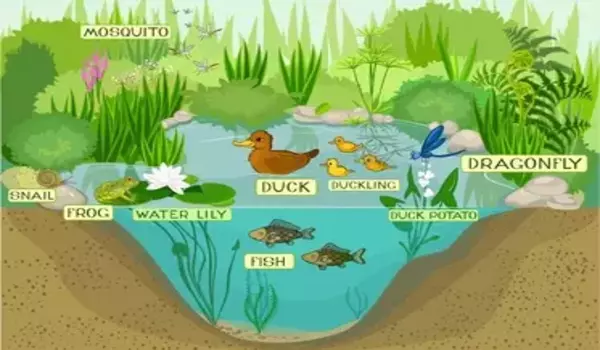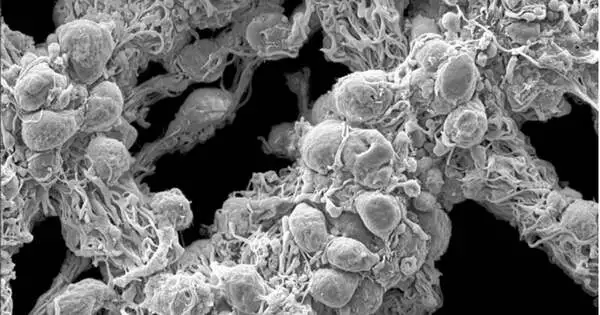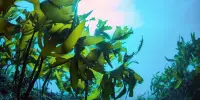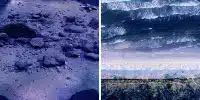Researchers discovered that the behavior of complex ecosystems can be predicted using only two pieces of information: the number of species in the community and the strength with which they interact with one another. It can be difficult to decipher all of the factors that influence the behavior of complex ecological communities. MIT researchers have now demonstrated that the behavior of these ecosystems can be predicted using only two pieces of information: the number of species in the community and the strength with which they interact with one another.
The researchers were able to define three states of ecological communities and calculate the conditions required for them to move from one state to the next by studying bacteria grown in the lab. These discoveries enabled the researchers to create a “phase diagram” for ecosystems, which is similar to the diagrams used by physicists to describe the conditions that control the transition of water from solid to liquid to gas.
“What’s amazing and wonderful about a phase diagram is that it summarizes a lot of information in a very simple form,” says Jeff Gore, an MIT physics professor. “We can draw a boundary that predicts a population’s loss of stability and the onset of fluctuations.”
Gore is the senior author of the study, which appears today in Science. Jiliang Hu, an MIT graduate student, is the lead author of the paper. Other authors include Daniel Amor, a former MIT postdoc; Matthieu Barbier, a researcher at the Plant Health Institute at the University of Montpellier, France; and Guy Bunin, a professor of physics at the Israel Institute of Technology.
While we cannot access all biological mechanisms and parameters in a complex ecosystem, we show that its diversity and dynamics may be emergent phenomena that can be predicted from just a few aggregate properties of the ecological community: species pool size and statistics of interspecies interactions.
Jiliang Hu
Population dynamics
The dynamics of natural ecosystems are difficult to study because, while scientists can make observations about how species interact with one another, they typically cannot conduct controlled experiments in the wild. Gore’s lab specializes in using microbes like bacteria and yeast to study interspecies interactions in order to learn more about how natural ecosystems work.
In recent years, his lab has demonstrated how competitive and cooperative behavior affect populations, as well as identified early warning signs of population collapse. During that time, his lab has progressed from studying one or two species at a time to larger-scale ecosystems.
As they worked up to studying larger communities, Gore became interested in trying to test some of the predictions that theoretical physicists have made regarding the dynamics of large, complex ecosystems. One of those predictions was that ecosystems move through phases of varying stability based on the number of species in the community and the degree of interaction between species. Under this framework, the type of interaction – predatory, competitive, or cooperative – doesn’t matter. Only the strength of the interaction matters.
To test that prediction, the researchers created communities ranging from two to 48 species of bacteria. For each community, the researchers controlled the number of species by forming different synthetic communities with different sets of species. They were also able to strengthen the interactions between species by increasing the amount of food available, which causes populations to grow larger and can also lead to environmental changes such as increased acidification.

“In order to see phase transitions in the lab, it really is necessary to have experimental communities where you can turn the knobs yourself and make quantitative measurements of what’s happening,” Gore says.
The results of these experimental manipulations confirmed that the theories had correctly predicted what would happen. Initially, each community existed in a phase known as “stable full existence,” in which all species coexisted without interfering with one another.
As the number of species or interactions between them increased, the communities entered a second phase known as “stable partial coexistence.” During this stage, populations remain stable, but some species have become extinct. The overall community remained stable, indicating that the population returns to a state of equilibrium after some species become extinct.
Finally, as the number of species or strength of interactions increased even further, the communities entered a third phase, which featured more dramatic fluctuations in population. The ecosystems became unstable, meaning that the populations persistently fluctuate over time. While some extinctions occurred, these ecosystems tended to have a larger overall fraction of surviving species.
Predicting behavior
Using this information, the researchers were able to create a phase diagram that describes how ecosystems change based on just two variables: the number of species and the strength of their interactions. This is similar to how physicists can describe changes in the behavior of water using only two conditions: temperature and pressure. It is not necessary to have a precise understanding of the speed and position of each water molecule.
“While we cannot access all biological mechanisms and parameters in a complex ecosystem, we show that its diversity and dynamics may be emergent phenomena that can be predicted from just a few aggregate properties of the ecological community: species pool size and statistics of interspecies interactions,” Hu says.
The creation of this kind of phase diagram could help ecologists make predictions about what might be happening in natural ecosystems such as forests, even with very little information, because all they need to know is the number of species and how much they interact.
“Even in the absence of detailed knowledge of what’s going on, we can make predictions or statements about what the community will do,” Gore says. “We don’t even know which species help or harm which other species; these predictions are based solely on the statistical distribution of interactions within this complex community.”
The researchers are now investigating how the introduction of new species into previously isolated populations (similar to island ecosystems) affects the dynamics of those populations. This may shed light on how islands can maintain species diversity even when extinctions occur.















